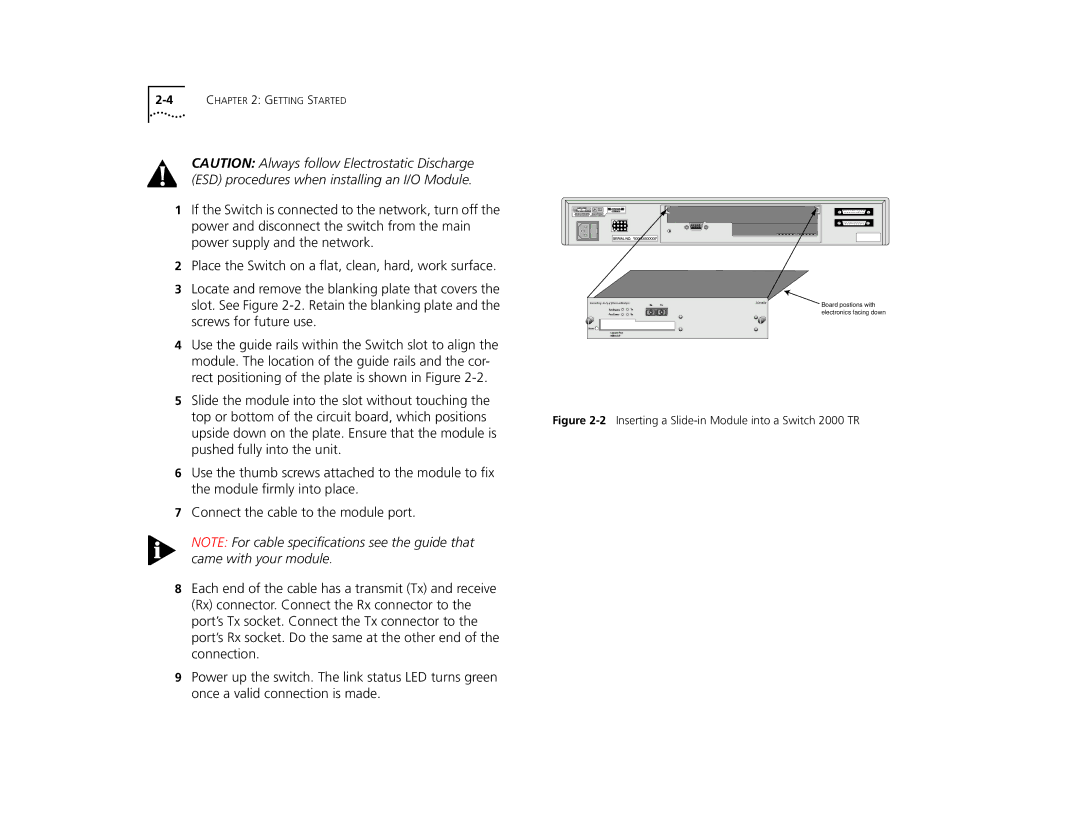
CAUTION: Always follow Electrostatic Discharge (ESD) procedures when installing an I/O Module.
1If the Switch is connected to the network, turn off the power and disconnect the switch from the main power supply and the network.
2Place the Switch on a flat, clean, hard, work surface.
3Locate and remove the blanking plate that covers the slot. See Figure
4Use the guide rails within the Switch slot to align the module. The location of the guide rails and the cor- rect positioning of the plate is shown in Figure
5Slide the module into the slot without touching the top or bottom of the circuit board, which positions upside down on the plate. Ensure that the module is pushed fully into the unit.
6Use the thumb screws attached to the module to fix the module firmly into place.
7Connect the cable to the module port.
NOTE: For cable specifications see the guide that came with your module.
8Each end of the cable has a transmit (Tx) and receive (Rx) connector. Connect the Rx connector to the port’s Tx socket. Connect the Tx connector to the port’s Rx socket. Do the same at the other end of the connection.
9Power up the switch. The link status LED turns green once a valid connection is made.
Token | Rx Tx | 3C510620 | Board postions with |
|
| ||
Full Duplex | Tx |
| electronics facing down |
Port Status | Rx |
| |
Reset |
|
|
|
Console Port |
|
|
|
9600,8,1,N |
|
|
|
